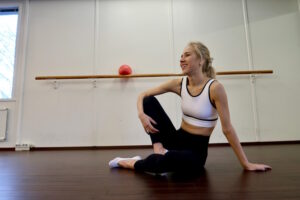
Developing a consistent Pilates practice is key to reaping the full benefits of this transformative exercise method. Whether you’re a beginner starting your Pilates journey or looking to establish a more consistent routine, there are several strategies that can help you develop a sustainable and enjoyable Pilates practice. In this comprehensive guide, we will explore how to improve your Pilates practice, provide tips on getting started with Pilates, discuss the first exercise you should learn, and outline the recommended frequency for practicing Pilates when you first start.
How can I improve my Pilates practice?
To improve your Pilates practice, consider the following strategies:
1. Attend Regular Classes: Consistency is vital for progress in Pilates. Aim to attend classes regularly, as instructed by your instructor or based on your personal goals. Attending classes allows you to receive guidance, feedback, and corrections from a qualified instructor.
2. Focus on Technique: Pay close attention to proper technique and alignment during each exercise. Understanding and practicing the fundamental principles of Pilates, such as breathing, core engagement, and alignment, will help you execute the exercises correctly and maximize their effectiveness.
3. Gradually Increase Intensity: As you become more comfortable and confident with the exercises, gradually increase the intensity of your Pilates practice. This can be achieved by incorporating advanced variations, adding resistance or props, or increasing the number of repetitions.
4. Seek Professional Guidance: Consider scheduling occasional private sessions or workshops with a qualified Pilates instructor. This can provide personalized attention, address specific concerns, and offer deeper insights into your practice.
5. Incorporate Pilates into Daily Life: Extend the benefits of Pilates beyond the studio by integrating its principles into your daily life. Practice good posture, engage your core during everyday activities, and apply the principles of mindful movement and body awareness in your daily routine.
How do I start practicing Pilates?
To start practicing Pilates, follow these steps:
1. Find a Qualified Instructor: Look for a qualified Pilates instructor who specializes in teaching beginners. A skilled instructor can guide you through proper alignment, technique, and modifications based on your individual needs.
2. Start with Beginner’s Classes: Begin with dedicated beginner’s classes or introductory workshops. These classes are designed to introduce you to the foundational principles and exercises of Pilates, ensuring a solid understanding and execution of the fundamentals.
3. Learn the Core Principles: Familiarize yourself with the core principles of Pilates, which include proper breathing, core engagement, spinal alignment, and precision of movement. These principles form the basis of a successful Pilates practice.
4. Practice Mindful Movement: Approach your Pilates practice with mindfulness and awareness. Focus on the sensations in your body, concentrate on proper alignment, and engage in controlled, deliberate movements.
5. Gradually Progress: As you gain strength, flexibility, and familiarity with the exercises, progress to more advanced movements and classes. Gradual progression ensures a safe and sustainable practice.
What is the first exercise you should teach in Pilates?
The first exercise taught in Pilates often varies depending on the instructor and the equipment available. However, a common starting point for beginners is the Pilates Hundred exercise. The Hundred is performed in a supine position, engaging the core and coordinating breath with arm movements. It helps warm up the body, activate the core muscles, and introduce the concept of connecting breath with movement.
How often should you do Pilates when you first start?
When you first start practicing Pilates, it is recommended to aim for two to three sessions per week. This frequency allows your body to adapt to the exercises, build strength, and establish familiarity with the Pilates technique. Regular practice also helps maintain continuity and progress in your Pilates journey. As you become more experienced and comfortable, you may gradually increase the frequency to four or more sessions per week if desired.
In this comprehensive guide to developing a consistent Pilates practice for beginners, we explored various strategies for improving your Pilates practice, such as attending regular classes, focusing on technique, gradually increasing intensity, seeking professional guidance, and integrating Pilates principles into daily life. We discussed the steps to start practicing Pilates, including finding a qualified instructor, beginning with beginner’s classes, learning the core principles, practicing mindful movement, and gradually progressing to more advanced exercises. Additionally, we highlighted the Pilates Hundred exercise as a common starting point for beginners. Finally, we recommended starting with two to three Pilates sessions per week and gradually increasing the frequency as you progress in your practice. By incorporating these guidelines into your Pilates journey, you can develop a consistent and fulfilling practice that brings you closer to your fitness goals and enhances your overall well-being.